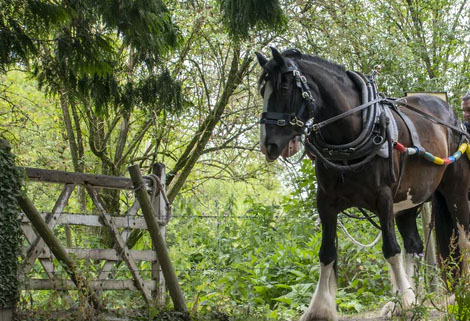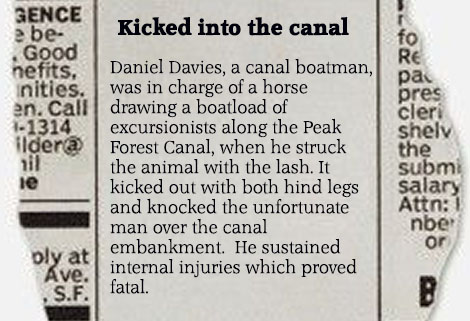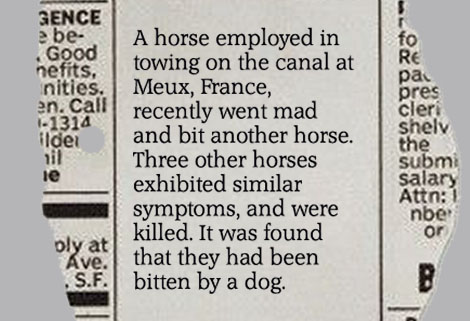River Canal Rescue has redesigned and re-launched its WaterNav app, making it freely available to all. The rescue service believes everyone should have access to the app – which allows navigation without wifi or data connection – as it improves safety and shares key information. And in order to assist in its development, RCR is calling for all boaters to download and trial the app and give feedback.
Read More
Monthly Archives: January 2021
boaters asked to trial WaterNav
boaters asked to put WaterNav on trial
River Canal Rescue has redesigned and re-launched its WaterNav app, making it freely available to all. The rescue service believes everyone should have access to the app - which allows navigation without wifi or data connection - as it improves safety and shares key information.
And in order to assist in its development, RCR is calling for all boaters to download and trial the app and give feedback.
The new WaterNav, which was previously split into eight different regions due to the amount of data stored offline, now incorporates all UK routes in a single app with a route planning function.
Detailing Places Of Interest (POI), including supermarkets, pubs, train stations and marinas, plus journey times and canal/river information, once installed, it can be used offline so is not reliant on the internet or data packages. However, as the current POI information is limited, RCR is asking boaters to check and update the data as they cruise.
There’s also a help/SOS function linked to RCR HQ, for boaters who require assistance. Plotting the user’s position within a 5m radius, this has proved invaluable in emergency situations or when cruising on rivers with no access.
RCR is committing substantial resources to developing WaterNav and hopes to make it the ‘go to’ navigation and information tool for boaters. A second development phase, bringing a host of new facilities, is expected by the summer and RCR is also in talks with Scottish Canals and the CRT about further upgrades to allow users to notify authorities of issues or problems at the push of a button.
Managing director, Stephanie Horton, explains: “We’ve upgraded WaterNav so it’s easier to access the UK-wide maps and in future, enhanced reporting tools will better connect the boating community. The new updates later this year will revolutionise waterway navigation and add some much-needed technical integration.
“With so many changes to businesses supporting our inland waterway network, I’m keen to get feedback and help cleanse and qualify the data we hold. I’m excited about the potential of the new system and the updates later this year – and the new IOS version will finally enable all boaters to access this amazing little app, which is well overdue.”
The upgraded WaterNav Beta is downloadable via Google Play and the App store, however updates will be added in the coming weeks for Apple device users. Feedback can be shared directly via the app- just hit the feedback button - and updates should install automatically once there’s an internet connection.
Find out more about River Canal Rescue or follow the team on Facebook.
magnet fisher finds live grenade in Kennet & Avon Canal
A magnet fisher who caught a grenade in the Kennet and Avon Canal was given the kit he used as a Christmas present. Friends Tony Scott and Elliot Bromfield were using the equipment – which is similar to metal detecting but in water – when they pulled up the object. Elliot, who is ex-army, said he knew it was a World War Two hand grenade and they called the police immediately.
Read More
horse versus engine
horse versus engine
 It is one of the most romanticised sights you can see on the canal, a patient boathorse quietly striding forward, its boat gliding silently behind.
It is one of the most romanticised sights you can see on the canal, a patient boathorse quietly striding forward, its boat gliding silently behind.
In this age of ecological cares it’s not unreasonable to question whether the horse should make some sort of comeback, but what is the difference between a horse and an engine?
The horse and the modern combustion engine are in fact extremely similar. They both come in a variety of sizes and strengths and, while they can both theoretically be used by someone with no idea, they perform best when used by someone with more specialised knowledge.
The combustion engine is of course doesn’t think and is entirely predictable, While even the calmest, best trained horse in the world is quite capable of looking at a perfectly innocent hedge, deciding there is a gremlin in it and leaping 6 foot into the air. In 1930, a young man named James Morgan caught the horse he was walking past by surprise and was kicked into the water. In 1890 Thomas Carrington gave his horse a smack on the bum and received a hoof to the face for his trouble.
A small child riding on the back of her family’s horse in 1930 tugged the reins and, despite it being something she had done on regular basis since she was born, was thrown from the horses’ back into a brick wall with predictable result.

An engine will tolerate being abused with resignation whereas a horse, naturally, will not, as demonstrated in 1906 on the Peak Forest canal, when Daniel Davies apparently decided to show off to the boatload of passengers they were towing and lashed the horse with his whip. The horse responded by lashing him with both iron-shod back hooves squarely in the chest, bowling him over the top of the embankment they were crossing and killing him.
Engine’s don’t have to be taught the job either, a task that needs to be carried out by professionals and even then it can be frankly dangerous, as seen in 1865; a pair of narrowboats, the “Elizabeth” and “Sarah” were working along the Bridgewater canal, drawn by a pair of horses working in tandem, that is, the two horses were hitched together, one in front of the other. The lead horse was an old hand at the job, which allowed 32 year old John Holt to concentrate his attention solely on the second horse, a leggy youngster learning the trade.
 As they left Broadheath, Holt was walking by the young horse’s head on the water-side of the colt, probably because he felt it preferable to be shoved into the water then crushed against a wall if the colt took umbrage. As they came under Seamons Moss bridge, the youngster tried to quicken his pace and Holt held him back by the bridle. The inexperienced animal tried to turn, his back foot slipped off the coping stones, and he panicked.
As they left Broadheath, Holt was walking by the young horse’s head on the water-side of the colt, probably because he felt it preferable to be shoved into the water then crushed against a wall if the colt took umbrage. As they came under Seamons Moss bridge, the youngster tried to quicken his pace and Holt held him back by the bridle. The inexperienced animal tried to turn, his back foot slipped off the coping stones, and he panicked.
As the youngster fell into the water, the lead horse was dragged in by the weight of his companion on the traces and Holt, still holding the bridle, was pushed beneath the water by the flailing animals. The approaching boats had no chance to stop and glided over the seething waters, while the two men on board ran forward to split the boats apart and try to unhitch the horses. Only the horses survived.
Horses can get sick, but so too can engines. The equine mechanic is a vet, and it is arguably only because of the reliance on horses that the veterinary field exists at all.
 Of course in the hey-days of the horse, vets were limited in what they could do; in 1868 four French boat horses started frothing at the mouth and ultimately went mad after being bitten by a rabid dog, and in 1886 an English horse that had been seen by a vet twice for “lethargy” simply dropped dead in what could be described as catastrophic engine failure.
Of course in the hey-days of the horse, vets were limited in what they could do; in 1868 four French boat horses started frothing at the mouth and ultimately went mad after being bitten by a rabid dog, and in 1886 an English horse that had been seen by a vet twice for “lethargy” simply dropped dead in what could be described as catastrophic engine failure.
Perhaps the biggest point in the favour of the engine is how it’s unaffected by the ignorance of the general public. In 1936, a horse working through Rugby was hit by a golf ball struck from the nearby course and, quite naturally, turned tail, snapped the towrope and bolted away from the direction of the offending missile. Also dawdling about on the towpath at the time were some walkers, who leapt shrieking into the hedge to avoid being mown down, and some fisherman, who didn’t help the situation by screaming at the horse when they realised they’d abandoned a fishing rod on the towpath. The terrified horse kept running for another mile.
In 1938, a harassed bargeman collared a pair of teenagers on the towpath and asked if they would hitch the waiting horse if he chucked them a rope, and was highly surprised when they obliged him but then didn’t move out of the rope’s way, got swept into the water and had to be rescued.
In 1899, a family held a picnic on a wide bit of towpath and watched in horror as a working horse broke their china and, to add insult to injury, defecated on their sandwiches rather than “making its way around their gathering.” As no doubt it wouldn’t be today either, the reporting sympathy did not lie with the exasperated boaters although the police did concede that the horse was unlikely to have poo’d with calculated malice.
